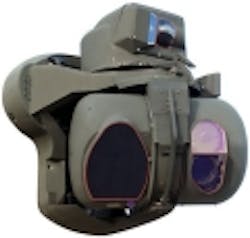Military infrared sensors to be improved at Lockheed Martin with licensed nBn electro-optics technology
GOLETA, Calif., 10 Dec. 2010.Infrared focal plane array designers at Lockheed Martin Corp. expect to reduce the size, as well as improve the resolution and reliability, of military infrared sensors with technology they obtain under an exclusive licensing agreement with the research laboratory IR Solutions Ltd. in Rochester, N.Y., and its chief executive officer, Shimon Maimon.
Lockheed Martin [NYSE: LMT] is licensing n-type-Barrier-n-type (nBn) technology, which Maimon has patented, as well as his other barrier-type focal plane inventions. Maimon also is a research associate at the University of Rochester's Institute of Optics. His company, IR Solutions Ltd., is a one-person operation.
Maimon's nBn electro-optics technology enables infrared detector coolers to operate at higher temperatures than typical IR coolers can today to reduce system complexity and increase system performance. Lockheed Martin will use this technology at the company's Santa Barbara Focalplane facility in Goleta, Calif., to develop improved forward looking infrared (FLIR) systems, such as those Lockheed Martin designs and builds at the company's Missiles and Fire Control segment in Orlando, Fla.
Maimon's nBn technology “has the potential to have wide-ranging positive influences on next-generation infrared systems,” says Rob Hearst, director of nBn technology integration at Lockheed Martin Missiles and Fire Control. “This game-changing technology will allow us to produce larger arrays that require less cooling than existing systems, and will ultimately lower operations and sustainment costs.”
Lockheed Martin-produced infrared sensor technology includes the Sniper Advanced Targeting Pod, the F-35 Lightning Electro-Optical Targeting System, targeting and pilotage systems for the U.S. Army Apache attack helicopter and U.S. Marine Corps Cobra attack helicopter, as well as Gyrocam sensors for U.S. ground vehicles.
For more information contact Lockheed Martin Santa Barbara Focalplane online at www.sbfp.com, or Lockheed Martin Missiles and Fire Control at www.lockheedmartin.com/mfc. Contact Shimon Maimon by e-mail at [email protected].
